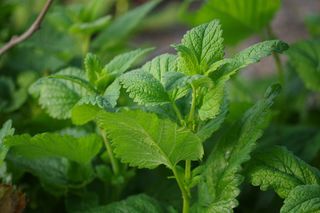Peppermint benefits

PEP UP YOUR HEATH: THE BENEFITS OF PEPPERMINT
Introduction to peppermint: The humble peppermint plant is a hybrid cross of the watermint and spearmint plants and is associated with a vast array of healing properties.
Dried peppermint leaves found in ancient Egyptian pyramids suggest that peppermint has been used for medicinal purposes for at least 3000 years.
Peppermint’s healing properties range from digestive, respiratory and dermatological to mental health and pain relief. Peppermint has both antifungal and antimicrobial properties. Peppermint oil is extracted from the plant by steam distillation. The oil can then be diluted in almond or coconut oil, diffused via water, prepared as a tincture in ethanol, or used to flavour chewing gum. Peppermint flavoured glycerite is another formulation more suitable for children. The oil is commonly processed into enteric coated capsules, which prevent the oil from being released in the stomach, which may cause indigestion and heartburn. Peppermint oil should never be applied neat as it can cause rashes and allergic reactions. Another popular format is peppermint tea, made from the leaves of the peppermint plant. Healthcare providers should always be consulted for advice before peppermint is taken or given to a child, particularly people with an existing medical condition or those being treated with prescribed medication.
Health benefits of peppermint: digestive and respiratory
The most widely known benefit of peppermint is its beneficial effects on digestive health. It can relieve stomach ache, indigestion and heartburn and reduce hunger pangs. Evidence has also shown that peppermint’s anti-spasmodic properties alleviate the symptoms of IBS (by relaxing stomach and intestinal muscles), such as bloating, cramps, diarrhoea, constipation and flatulence. Although peppermint should always be used with caution in infants, it has been shown to reduce the symptoms of colic in young children. It also reduces nausea in pregnant women or patients undergoing chemotherapy treatment. Peppermint can also prevent nipple cracks and pain in breastfeeding mothers. When inhaled, peppermint’s decongestant properties can aid the respiratory system for instance during colds and flu, and its expectorant properties help coughs by loosening mucus. Peppermint has also been shown to regress tuberculosis inflammation and can alleviate hay fever symptoms in some people by inhibiting histamine release.
Health benefits of peppermint: pain relief, mental health and skin conditions
Peppermint can be mixed with other essential oils such as lavender to reduce muscle and joint pain associated with arthritis and gout. Applied topically in massage oil it can relieve tight and sore muscles. Topical application can also reduce fever (feet and neck), relieve tension headaches (temples) and reduce pain associated with shingles. Inhaling peppermint can boost energy, mental focus, alertness, concentration and memory retention. It can also reduce anxiety and stress. Peppermint freshens bad breath and reduces cavity formation; it can also relieve teething pain in babies. Adding a few drops to shampoo can help reduce dandruff as it stimulates the scalp and it can also improve hair volume and shine. Peppermint soothes sunburn, itching (such as that caused by nettle rash) and inflammation arising from eczema, psoriasis and acne.
